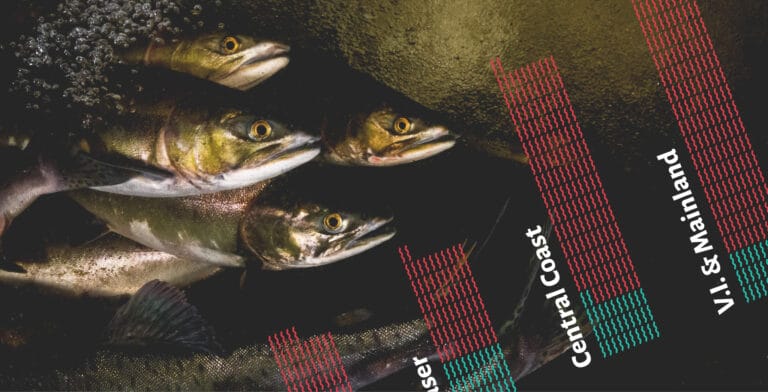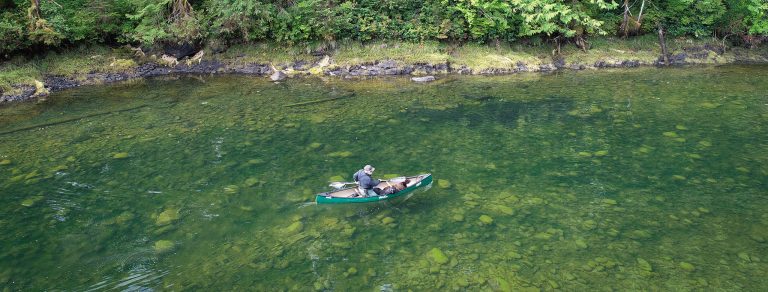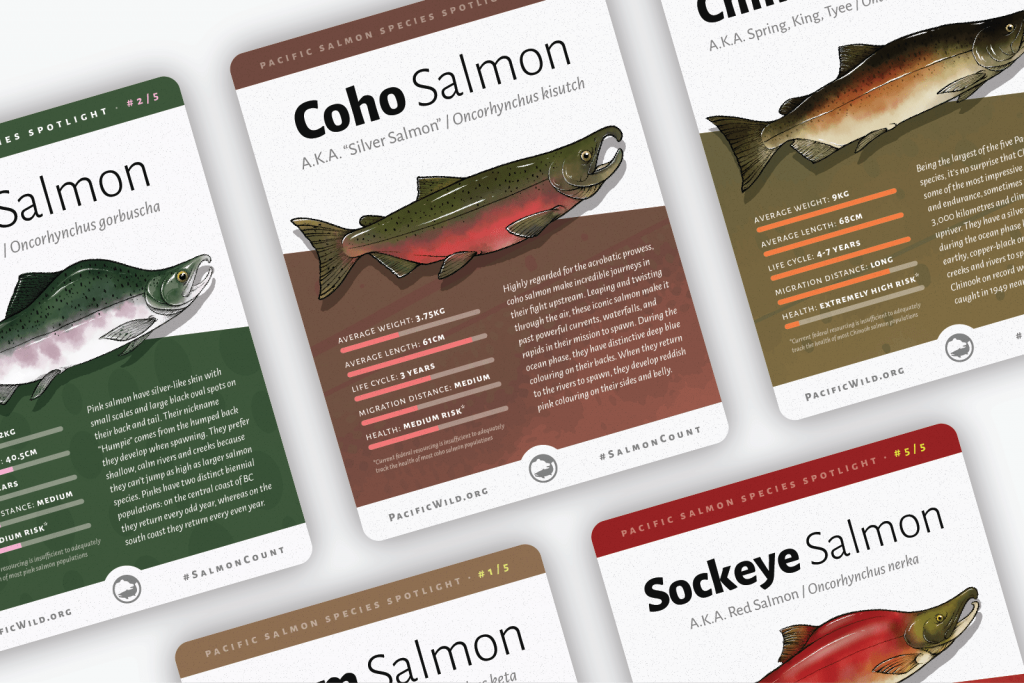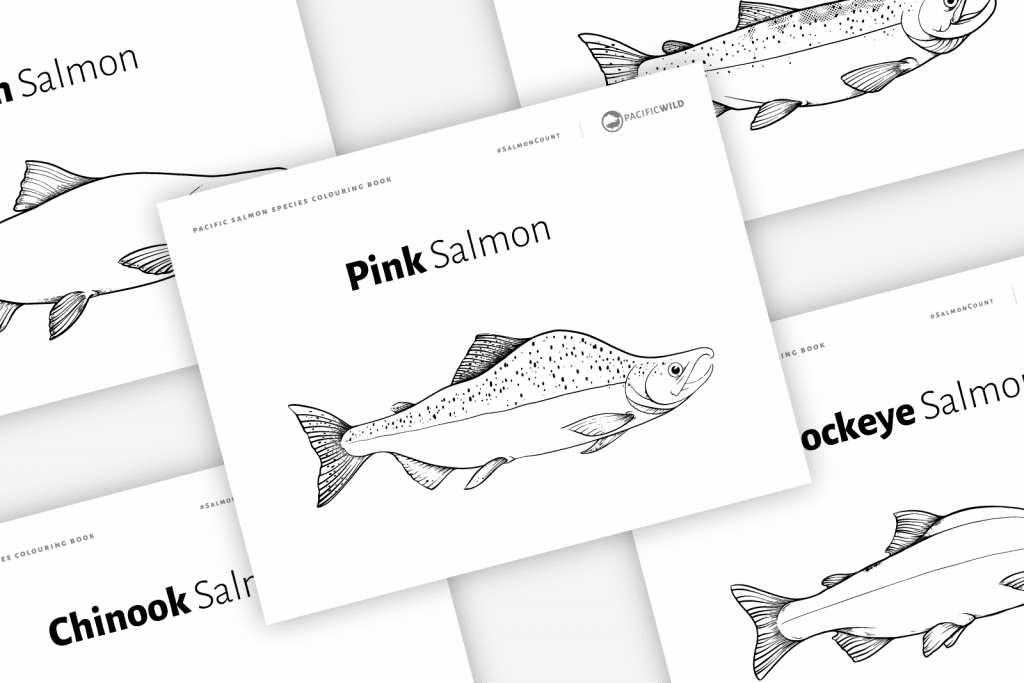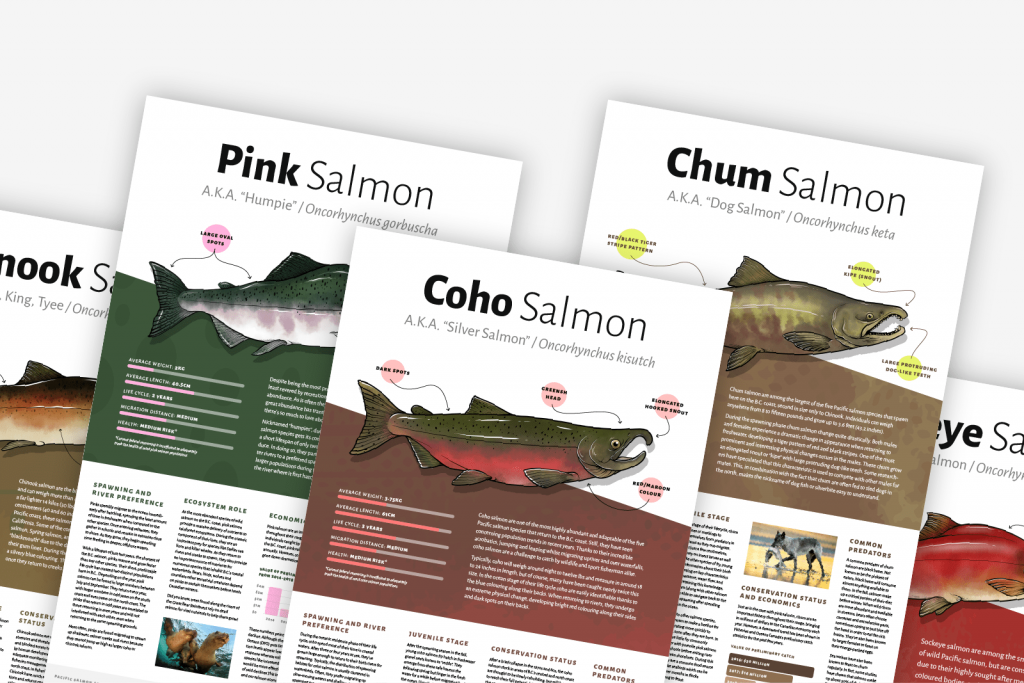The Great Bear Rainforest is the largest remaining intact temperate rainforest in the world and a global powerhouse of biodiversity. Life on this coast, from the tallest trees to the largest bears, owes its very existence to the massive annual migration of salmon in more than 2,000 creeks and rivers found throughout the Great Bear Rainforest. Coastal ecosystems, economies and culture have been built on the abundance of wild salmon for thousands of years, but decades of overfishing, habitat destruction and a changing ocean due to climate change have reduced wild salmon populations to a fragment of their historic numbers and even the most remote watersheds found along the B.C. coast are being impacted by low returns.
The biological worth of salmon is perhaps most significant: mammals, trees, birds, and even the most microscopic of plankton, all depend on salmon, and their absence would have notable consequences on biodiversity. Salmon are a source of food for many Pacific species including bears, eagles and wolves; even after death they continue to contribute as they decompose into fertilizer for forests.
This transfer of nutrients from salmon into forests can best be seen in the feeding habits of coastal bears. Studies have shown that coastal bears receive the bulk of their energy (carbon and nitrogen) from spawning salmon. In one river system west of Prince Rupert, B.C., resident bears have been known to carry over 6,200 kg of salmon from the rivers to the woods, eating two thirds of the protein and leaving behind nearly 2,000 kg of salmon remains. Bears play a critical role in transporting nutrients from freshwater to the terrestrial environment, spreading the food source to other species and the forest floor. Decaying salmon carcasses are distributed everywhere post spawning, allowing nutrient rich soil to provide for the dense plant life of the rainforest (Kinver, 2011). Salmon remains from the feeding process decompose slowly, spreading nutrients over time.
Wolves and other large coastal predators also consume salmon. Wolves often make a meal out of salmon simply because it takes much less energy than chasing down larger mammals yet offers similar payoff (Darimont et al. 2003). Salmon can often be the only food source option for lone wolves, pups and older wolves who are unable to hunt larger prey (Szepanski et al. 1999). Eagles also depend on salmon as an essential food source through the winter months.
Wild salmon on the B.C. coast are in crisis and it is not a cycle but a continuing trend that deserves concrete emergency measures if we are going to succeed in restoring salmon to their former abundance and genetic diversity. Mixed stock fisheries that intercept endangered and threatened populations of salmon should be stopped but we also need an ecosystem-based approach to salmon management, one that accommodates the vital needs of all species and respects salmon as a crucial ecosystem driver. This should be the very basis of an emergency salmon recovery program. At the end of the day, conserving Pacific salmon equates to protecting the Great Bear Rainforest.
Works Cited
- Darimont, C. T., Reimchen, T. E., & Paquet, P. C. (2003). Foraging behaviour by gray wolves on salmon streams in coastal British Columbia. Canadian Journal of Zoology, 81(2), 349-353. doi:10.1139/z02-246
- Harvey, B., and M. MacDuffee — editors. 2002. Ghost Runs: The future of wild salmon on the north and central coasts of British Columbia. Raincoast Conservation Society. Victoria, BC.
- Kinver, M. (2011, March 24). Pacific salmon run helps shape Canada’s ecosystems. https://www.bbc.com/news/science-environment-12849019
- Szepanski, M.M., Ben-David, M., and Van Ballenberghe, V. 1999. Assessment of anadromous salmon resources in the diet of the Alexander Archipelago wolf using stable isotope analysis. Oecologia, 120: 327–335.
